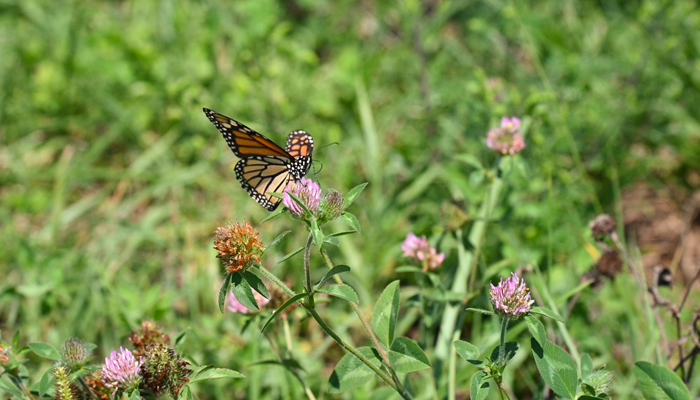On March 18th, the U.S. Fish and Wildlife Service (FWS) re-opened the public comment period on the Monarch Butterfly. This decision came after FWS received tens of thousands of comments during the initial comment period that closed March 12th. Farmers interested in offering their own comments can email me at corey.lacey@ilsoy.org for help drafting public comments.
Big Picture
The Monarch Butterfly has two primary populations. One population is west of the Rocky Mountains, primarily in California. The second, more common population is located east of the Rocky Mountains, covering all of Illinois and most of the Midwest and Southern U.S. Despite being larger than the western monarch population, the eastern population receives more public attention. This iconic species migrates over multiple generations each single year from Mexico through the southern U.S. to the northern Midwest and parts of Canada, returning to the same forest in Mexico to overwinter. This continent-wide migration creates unique challenges for species monitoring and recovery plans.

Photo sourced from Real Ag Stock.
Western Population – A Shrinking Population
The Xerces Society recently released data from its annual Western Monarch Count, a community science effort focused on tracking and monitoring the western monarch butterfly population along the California coast. The survey began in 1997, and the data has been a crucial tool for gathering information about the western monarch population. According to the Xerces Society, the 2024 count was a record low, with only 9,119 monarchs counted at overwintering sites in California. In 2023, 233,394 butterflies were counted. The Xerces Society monitors only the western monarch population, which is distinct from the eastern monarch butterfly found in Illinois and much of the Midwest.
Eastern Population – A Conservation Success Story
Population counts for the eastern monarch butterfly population, which migrates across the North American continent including Illinois, are conducted by the World Wildlife Fund. In exciting news, conservation efforts, including those by Midwest farmers, suggest success in helping the eastern monarch recover. The 2025 monarch count shows the population nearly doubled - occupying 4.42 acres, up from 2.22 acres from last year. Population efforts are based on the number of acres of forest occupied by overwintering monarch butterflies in Mexico.
U.S. Fish and Wildlife Service Proposed Listing
Both monarch butterfly populations have recently been proposed for listing as threatened under the Endangered Species Act by the FWS. A threatened, opposed to endangered, listing gives the federal government greater flexibility, allowing for exceptions under what is known as the 4(d) rule. While the ”threatened” listing is preferred there is still reason to be concerned:
- Use of “Conversion” Language: The proposed rule by the FWS includes restrictive language on land conversion, potentially limiting farmers’ ability to transition land to and from agricultural use. The term “conversion” can be broad and open to interpretation, causing uncertainty about what activities are permissible without violating the rule. Restrictions on land conversion could reduce farmers’ flexibility and ability to respond to changing circumstances. Moreover, the use of “conversion” language could cause confusion and discourage involvement in other government conservation programs that transition land out of production for a set period. The Illinois Soybean Association recommends farmers share comments that encourage the agency to remove this language from the proposed rule.
- Complications Around Pesticide Regulations: The FWS did not provide an exception for pesticide use in the proposed rule, instead asking for input from stakeholders. This has led to confusion about how a listing will impact pesticide use. This issue is further confused by the Environmental Protection Agency’s changes to pesticide policy, such as the Insecticide Strategy which has not been finalized, making it hard to provide the FWS with feedback. That said, the Illinois Soybean Association recommends farmers share the need for strong pesticide use exception in the final rule. Illinois farmers need clarity, stability, and flexibility regarding access to pesticide products, including insecticides and herbicides.


 and then
and then